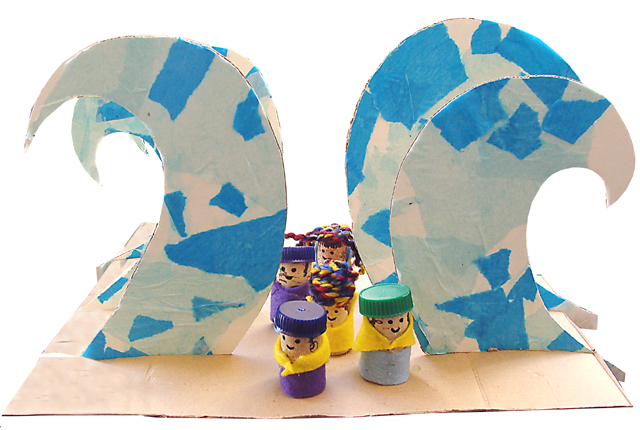In the past month I have offered an oncology consult to a woman whose cancer was diagnosed eighteen years ago and declared cured thirteen years ago – a Jewish lifetime since diagnosis and long enough for a child to reach the age of Jewish maturity since her oncologic cure.
Such is the world of chronic illness. We don’t let ourselves think in terms of cure. We don’t let ourselves say we have had cancer, or had mental illness, or had lupus, but rather we are defined by them. We are living with schizophrenia, suffer from lupus, or at the best we are cancer survivors. The cancer is gone; it’s mark on us is indelible.
I stood on the shores of the Sea of Reeds Friday morning and thought to myself, “Just a little longer, just a little further.” Just get to the other side and you’re truly free. You thought you were free when you escaped Egypt, when you wriggled out of your dire straits, but they followed you into the wilderness. But this water that rises before you like an impenetrable wall – if you can find your way through to the other side all your worries will finally be behind you for good.
My symbolic religious moment was like that moment for so many of you, that moment before the surgery, the one that will remove the tumor, or before starting the medicine that you fought the insurer for six months to get that will be sure to kick the ass of the disease you’re grappling with. If you can just get to the other side…
But a funny thing happens on the way to the other side. The story says that when the waters part, “The waters are like a wall to them on the left and the right.” You experience this miracle, where the impenetrable wall splits in half, like a gate opening in the wall of a prison, and lets you pass through, doom on either side but freedom dead ahead.
Really, it is like Rabbenu Bahya said hundreds of years ago, inserting a couple extra words of editorial commentary into the story, “The waters are like a wall to them, on the left, on the right and above.”
Above. Hanging over our heads. We can pass through, but that flaming sword of doom is always there. You are a cancer survivor, but there is always that next scan lurking around the corner. Early in my career I cared for a woman in her 90s who fell in the bathroom. The x-ray of her shoulder revealed multiple spots on her lung – likely already-metastatic recurrence of the breast cancer she though cured twenty-five years earlier.
Hanging over our heads, like a bucket over the door in a bad practical joke. Just days after passing miraculously between walls of water the children of Israel find themselves with no water at all – at least, none that they can drink. Sound familiar? You finally exhale, finally feel better, and then comes the next cold. The next asthma attack. Lupus flare. Broken hip. Sprained wrist. Relapse into addiction. You are six months out from the event that left you with post-traumatic stress, six months to the day, and there is another hateful shooting, just like the one that broke you, your family, and your community.
And so I’ve been asking myself this question: When do you get to cross the sea and just be well for a change, with no water waiting to flood down over you?
Talking to myself is getting old, so now I’m asking you, healers and people in need of healing alike: When, and how, do you finally cross the sea, finally get to a place of calm and quiet where you can breathe before the next crisis begins? When do you get to say, “Well, thank God that’s over!” when you know it’s only a matter of time before something else begins?
Email me at [email protected] or post to the social media outlet where you read this and tell us how you’ve managed to cross the sea – or how you’re still grappling with the wall of water over your head.
The previous version of this post misidentified the source of the commentary “and above.”
